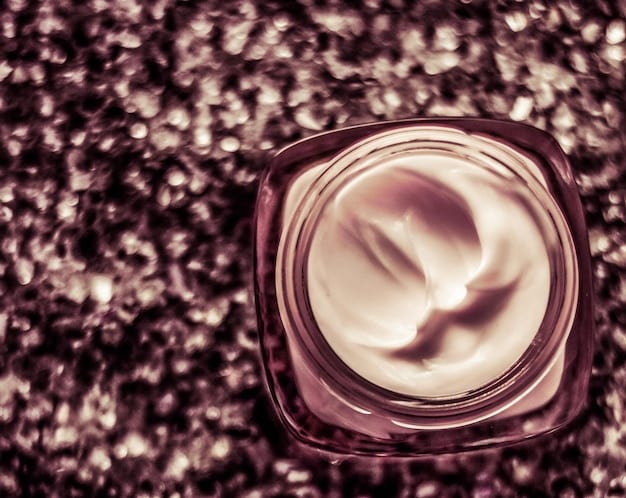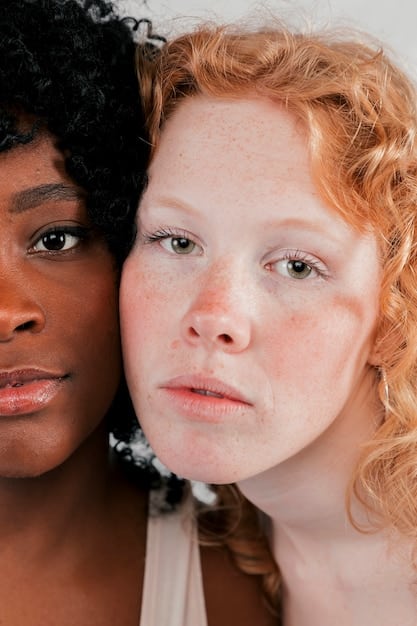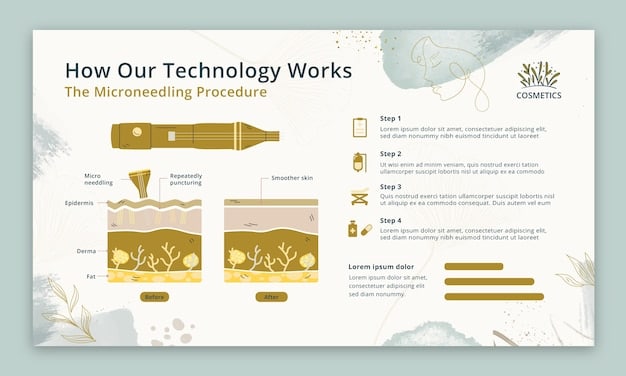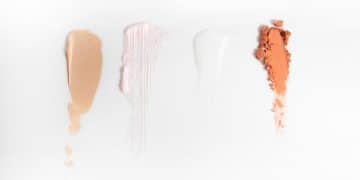The Power of Primers: Find the Perfect One for Your Skin

The Power of Primers: Which One Is Right for You? (Comparison & Analysis) delves into the world of makeup primers, offering a comprehensive guide to help you choose the best primer for your specific skin type and desired makeup finish, ensuring a flawless and long-lasting look.
Ever wondered how makeup artists achieve that flawless, long-lasting finish? The secret often lies in the unsung hero of the makeup bag: the primer. This article, **The Power of Primers: Which One Is Right for You? (Comparison & Analysis)**, will help you unlock the secrets to finding the perfect primer for your skin.
Understanding the Basics of Makeup Primers
Makeup primers are essential for creating a smooth canvas for your foundation and other face makeup. They work by filling in pores, smoothing fine lines, and creating a barrier between your skin and your makeup.
Primers come in various formulations, each designed to address specific skin concerns. Let’s explore the core benefits of using a makeup primer as part of your beauty routine.
The Key Benefits of Using Primer
Primers offer a range of benefits that contribute to a flawless makeup look and improve the overall health of your skin. Here are some key advantages.
- Extends the Wear of Makeup: Primers help makeup adhere better to the skin, preventing it from fading or creasing throughout the day.
- Smoothes Skin Texture: By filling in pores and fine lines, primers create a more even surface for foundation application.
- Controls Oil Production: Certain primers contain ingredients that help absorb excess oil, keeping your skin matte and shine-free.
- Hydrates Dry Skin: Hydrating primers add moisture to the skin, preventing makeup from looking cakey or clinging to dry patches.
Ultimately, understanding these core benefits and the various types of primers available is crucial for making the right choice for your skin.
Identifying Your Skin Type and Concerns
Before choosing a primer, it’s crucial to identify your skin type and specific concerns. This will help you select a primer that addresses your individual needs and delivers the best results.
Understanding your skin can be the difference between a perfect base and a makeup mishap. Let’s dive into the nuances of different skin types and the common issues they face.

Common Skin Types and Their Characteristics
Here’s a breakdown of the most common skin types and their defining features:
- Oily Skin: Characterized by excess oil production, often leading to shine, enlarged pores, and acne breakouts.
- Dry Skin: Lacks moisture, resulting in flaky patches, tightness, and a dull appearance.
- Combination Skin: Exhibits both oily and dry areas, typically an oily T-zone (forehead, nose, and chin) and dry cheeks.
- Sensitive Skin: Easily irritated by certain ingredients or products, leading to redness, itching, and inflammation.
By understanding the basic characteristics of your skin type, you can choose products specifically designed for these traits, enhancing your skin and makeup results.
Exploring Different Types of Primers
Once you’ve identified your skin type, you can begin exploring the different types of primers available. Each type is formulated to address specific needs, offering a range of benefits from oil control to hydration.
From mattifying gels to hydrating creams, the world of primers can be both vast and confusing. Let’s break down the most popular types of primers and what they offer your beauty routine.
Popular Types of Primers
Here’s a look at some of the most common types of primers and their unique properties:
- Mattifying Primers: Ideal for oily skin, these primers absorb excess oil and create a matte finish, preventing shine and keeping makeup in place.
- Hydrating Primers: Perfect for dry skin, these primers provide a boost of moisture, preventing makeup from clinging to dry patches and creating a dewy look.
- Color-Correcting Primers: These primers contain pigments that neutralize specific skin tones, such as redness or sallowness, creating an even base for makeup.
These primers are often essential additions to makeup routines, providing different effects to different skin types. From blurring to specialized uses, the right primer leads to transformative results.
Ingredients to Look For and Avoid
When choosing a primer, pay attention to the ingredient list. Certain ingredients can benefit your skin, while others may cause irritation or breakouts.
From hyaluronic acid to parabens, ingredient lists can seem daunting. Knowing what to look for (and what to avoid) empowers you to make the best choice for your skin.

Beneficial Ingredients in Primers
These are some ingredients that can improve the performance and skincare properties of your primer:
- Hyaluronic Acid: A powerful humectant that attracts and retains moisture, keeping the skin hydrated and plump.
- Salicylic Acid: Helps to exfoliate the skin and unclog pores, making it ideal for acne-prone skin.
- Antioxidants: Protect the skin from free radical damage, preventing premature aging and promoting a healthy complexion.
When selecting primers, it can be easy to fall for product hype, but the ingredient list will give the best insights into any potential benefits the primer can provide.
Application Techniques for Primers
Applying primer correctly is just as important as choosing the right one. Proper application ensures that the primer effectively smooths the skin, controls oil, or provides hydration.
How you apply your primer can impact its effectiveness. Let’s explore the best techniques for getting the most out of your primer, ensuring a flawless canvas for makeup application.
Best Practices for Primer Application
Follow these tips to ensure optimal primer application:
- Cleanse and Moisturize: Always start with a clean, moisturized face before applying primer.
- Use a Small Amount: Apply a pea-sized amount of primer to your fingertips or a brush.
- Focus on Problem Areas: Concentrate the primer on areas where you experience oiliness, dryness, or texture.
- Allow It to Set: Let the primer sit on your skin for a few minutes before applying foundation.
Applying makeup may feel like an everyday task, but with the right techniques your skin results can improve dramatically.
Top Primer Recommendations Based on Skin Type
Selecting the right primer can often feel overwhelming. To make the process easier, here are some highly recommended primers based on different skin types and concerns.
Navigating different brands and formulations takes time, so it’s useful to understand popular preferences to streamline the selection process.
Primer Recommendations
From drugstore favorites to high-end products, here are some primers that stand out in the beauty community:
- For Oily Skin: Maybelline FaceStudio Master Prime Blur + Pore Minimize Primer, known for its mattifying properties and ability to minimize the appearance of pores.
- For Dry Skin: e.l.f. Cosmetics Hydrating Face Primer, which provides a surge of moisture and creates a dewy base for makeup.
- For Combination Skin: Smashbox Photo Finish Foundation Primer, is a versatile primer that smooths skin texture and extends makeup wear for all skin types.
These products are highly recommended among beauty experts, and will serve as a useful guide for your personal primer selection.
| Key Aspect | Brief Description |
|---|---|
| ✨ Smoothing | Fills pores and fine lines for even makeup application. |
| 💧 Hydration | Provides moisture to prevent makeup from looking dry. |
| ☀️ Oil Control | Absorbs excess oil to keep skin matte. |
| 🎨 Color Correction | Neutralizes skin tones for an even base. |
Frequently Asked Questions
A makeup primer creates a smooth base for makeup, extends its wear, controls oil production, and hydrates skin, leading to a flawless look.
Yes, primer can be worn alone to smooth skin, minimize pores, and provide a natural, even complexion, making it perfect for a no-makeup look.
Opt for mattifying primers that contain oil-absorbing ingredients like silica or charcoal to control shine and keep your makeup in place all day.
Choose hydrating primers with ingredients such as hyaluronic acid or glycerin that give moisture and prevent makeup from clinging to dry patches.
Silicone-based primers can create a smooth surface for makeup, but some people may find they clog pores. If you’re concerned, try a non-comedogenic, water-based formula.
Conclusion
Choosing the right primer can be an exciting journey towards understanding the importance of **The Power of Primers: Which One Is Right for You? (Comparison & Analysis)** and its impact on your makeup routine. By considering your skin type, desired finish, and the ingredients in the primer, you can achieve a flawless, long-lasting look that enhances your natural beauty. Experiment, explore, and find the primer that works best for you.





